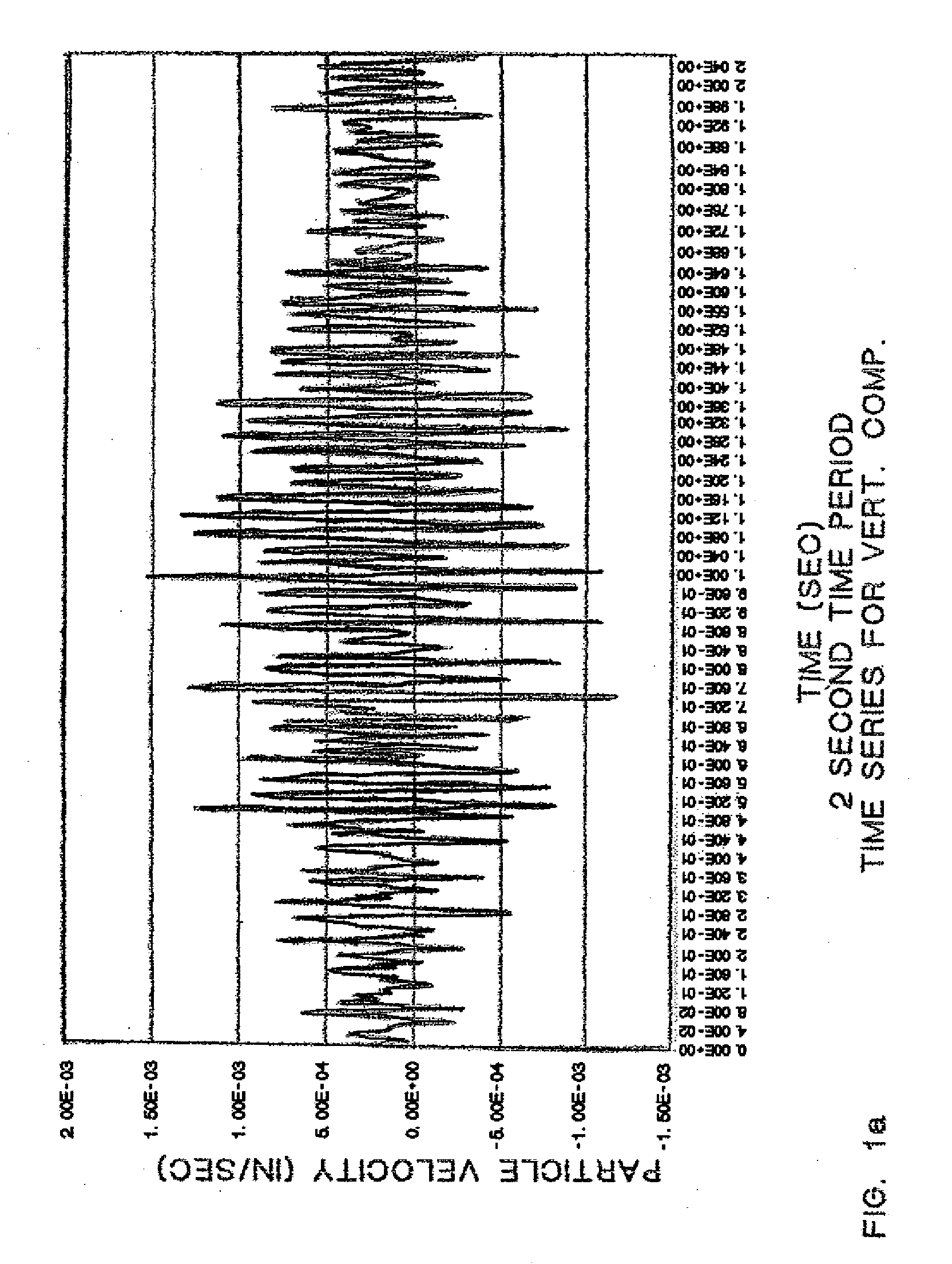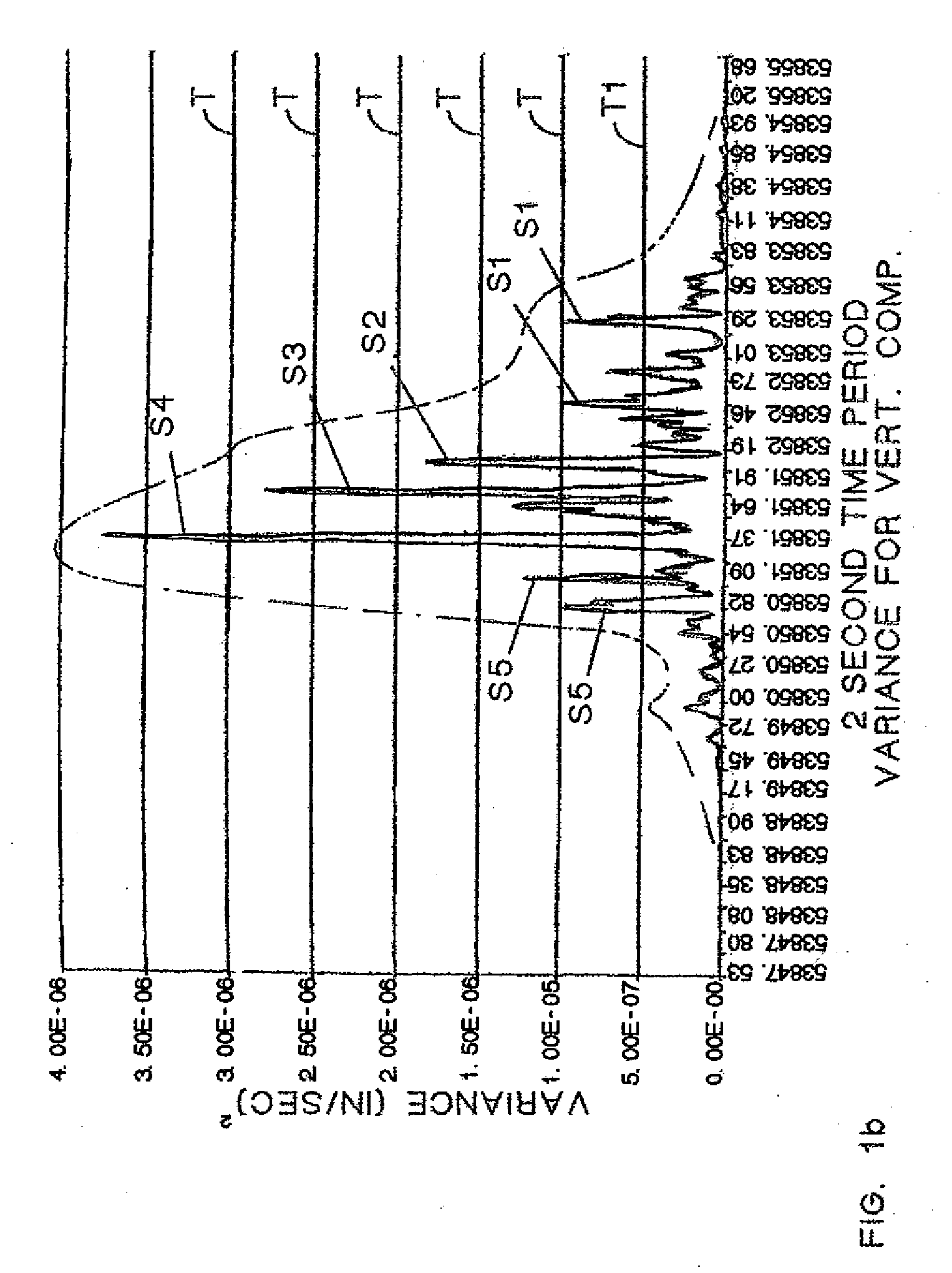Method for weighing vehicles crossing a bridge
a technology for weighing vehicles and bridges, applied in liquid/fluent solid measurement, machines/engines, instruments, etc., can solve the problems of frequent maintenance, inconvenient detour routes, and high equipment and installation costs of systems
- Summary
- Abstract
- Description
- Claims
- Application Information
AI Technical Summary
Benefits of technology
Problems solved by technology
Method used
Image
Examples
Embodiment Construction
Vehicle Generated Vibration in Bridge Pavement
[0024]Whenever in motion, a vehicle encounters rolling resistance on a roadway or on a bridge. The rolling resistance includes the vehicle interaction with the bridge deck pavements. In order to continue its motion, the vehicle must supply energy at a rate sufficient to overcome this rolling resistance. Based on automotive engineering studies, the rolling resistance, Rr, of a vehicle wheel is related to the vehicle weight, W, and the rolling resistance coefficient, K, according to the relation,
Rr=KW
The rolling resistance coefficient, K, is weakly dependent on pavement temperature and moisture content, but is approximately equal to 0.012 under normal driving conditions. If the vehicle moves with speed, V, the energy rate to overcome the resistance is
ER=RrV
The energy rate, ER, is defined as
ER=Ci∑n=1Nσi2,n
where[0025]Ci=correlation coefficient for ith component of particle velocity[0026]N=total number of samples in sample interval[0027]n=sam...
PUM
 Login to View More
Login to View More Abstract
Description
Claims
Application Information
 Login to View More
Login to View More - R&D
- Intellectual Property
- Life Sciences
- Materials
- Tech Scout
- Unparalleled Data Quality
- Higher Quality Content
- 60% Fewer Hallucinations
Browse by: Latest US Patents, China's latest patents, Technical Efficacy Thesaurus, Application Domain, Technology Topic, Popular Technical Reports.
© 2025 PatSnap. All rights reserved.Legal|Privacy policy|Modern Slavery Act Transparency Statement|Sitemap|About US| Contact US: help@patsnap.com



